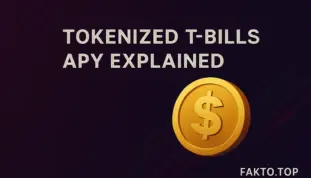RWA Yields: T-Bills Safety vs. DeFi Risk Full Compariso
Deep Dive: Tokenized T-Bills APY, DeFi Yield, and RWA Liquidity Risk Comparison
RWA: The Convergence of Financial Yields and Decentralized Risk
Real-World Assets (RWA) have emerged as one of the most promising bridges between traditional finance (TradFi) and decentralized finance (DeFi). By tokenizing tangible assets—such as U.S. Treasury Bills, real estate, and commodities—investors can access yield-bearing instruments on-chain, often with enhanced liquidity and transparency. This convergence is attracting institutional interest, particularly from investors seeking stable returns without abandoning the innovation of blockchain infrastructure.
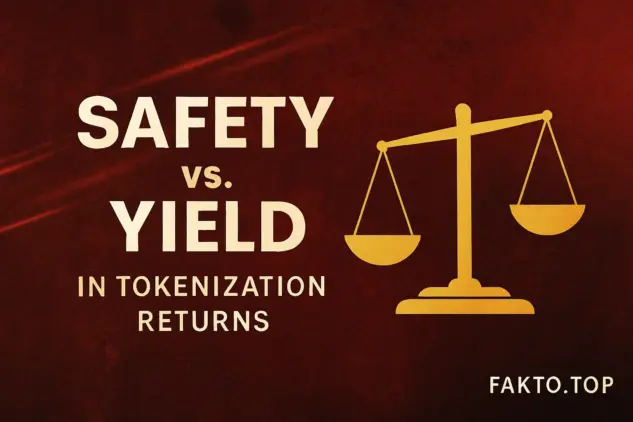
This article provides a comprehensive comparison of RWA yield, safety, and liquidity across four major categories: tokenized Treasury Bills, tokenized real estate, DeFi RWA lending protocols, and stablecoin APY platforms. We will assess how these instruments differ in their return mechanics, risk profiles, and regulatory clarity—especially for investors operating in the U.S., Canada, UK, and EU.
Yield Assessment: The Mechanics Behind RWA APY
Yield is the primary driver of investor interest in RWA tokens. However, the mechanics behind these yields vary significantly depending on the underlying asset and platform. Understanding how APY is generated—and sustained—is critical for evaluating long-term performance and risk.
Tokenized Treasury Bills: These instruments typically offer a fixed APY in the range of 4.5% to 5.0%, mirroring the yield of short-term U.S. government debt. Platforms such as Ondo Finance and Matrixdock tokenize T-Bills and distribute yield to token holders via automated smart contracts. The yield is predictable and backed by sovereign credit, making it attractive for risk-averse investors.
DeFi RWA Lending: Protocols like Centrifuge and Goldfinch offer significantly higher APYs—often between 8.0% and 12.0%—by lending to off-chain borrowers such as fintech firms or real estate developers. These yields are variable and depend on borrower demand, collateralization ratios, and protocol utilization. While lucrative, they carry elevated risk due to smart contract exposure and counterparty uncertainty.
Tokenized Real Estate: Platforms like RealT and Tangible tokenize rental properties and distribute yield from rental income. APY ranges from 6.0% to 8.0%, depending on location, occupancy, and property management efficiency. While backed by physical assets, these tokens may suffer from illiquidity and regulatory ambiguity.
Stablecoin APY Platforms: Lending stablecoins via platforms like Aave or Compound typically yields 2.5% to 4.0%. These rates fluctuate based on supply-demand dynamics and are often lower than RWA yields. However, they offer high liquidity and composability within DeFi ecosystems.
RWA Yield and Risk Matrix
| Asset Type | Typical APY Range | Liquidity Score (1–5) | Smart Contract Risk | KYC Requirement |
|---|---|---|---|---|
| Tokenized T-Bills | 4.5% – 5.0% | 5 | No | Yes |
| Tokenized Real Estate | 6.0% – 8.0% | 3 | Yes | Yes |
| DeFi RWA Lending | 8.0% – 12.0% | 3 | Yes | No |
| Stablecoin APY (Aave, Compound) | 2.5% – 4.0% | 4 | Yes | No |
Tokenized Treasury Bills: The Benchmark for Safety
Tokenized Treasury Bills (T-Bills) represent the gold standard of safety within the RWA ecosystem. These instruments are backed by short-term U.S. government debt, which carries virtually zero default risk. Platforms such as Ondo Finance and Backed Finance tokenize these assets and distribute yield to investors via smart contracts, while custody and compliance are handled by regulated entities.
The safety of tokenized T-Bills stems from three core factors: the creditworthiness of the U.S. government, the transparency of the underlying asset, and the regulatory clarity surrounding Treasury securities. Unlike synthetic yield products or algorithmic stablecoins, tokenized T-Bills are anchored to real-world instruments with decades of market history.
Moreover, these tokens often require KYC verification and are issued under frameworks such as Reg D or Reg S, ensuring compliance with U.S. securities law. Custodians like Clear Street or Sygnum Bank hold the actual T-Bills, while the token merely represents a claim on the yield. This structure minimizes smart contract risk and counterparty exposure.
For investors seeking capital preservation and predictable returns, tokenized T-Bills offer a compelling alternative to volatile DeFi protocols. Their APY—typically between 4.5% and 5.0%—may be lower than DeFi yields, but the risk-adjusted return is significantly higher.
High-Yield DeFi Protocols: Analyzing the APY Premium
DeFi RWA lending protocols promise high APYs, often ranging from 8.0% to 12.0%. These platforms—such as Centrifuge, Goldfinch, and Maple Finance—connect on-chain capital with off-chain borrowers, including fintech startups, real estate developers, and supply chain firms. While the yield is attractive, the risk profile is substantially more complex.
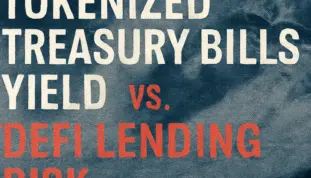
The elevated APY is a direct result of borrower demand and the absence of traditional underwriting. Loans are often undercollateralized or rely on real-world enforcement mechanisms, which may not be compatible with blockchain-native risk management. Additionally, protocol utilization rates and token incentives can distort yield sustainability.
Smart contract risk is another critical factor. Vulnerabilities in lending pools, oracle manipulation, and governance exploits have led to significant losses in the past. Unlike tokenized T-Bills, DeFi protocols operate in a permissionless environment, where code is law—and bugs can be fatal.
Collateral risk also looms large. If the borrower defaults, recovery depends on legal enforcement, which varies by jurisdiction and is often slow. Some platforms attempt to mitigate this via insurance or third-party guarantees, but these mechanisms are not foolproof.
Despite these risks, DeFi RWA lending remains popular among yield-seeking investors. The ability to earn double-digit returns without traditional intermediaries is a powerful draw—but one that requires careful due diligence and risk management.
Regulatory Risk: Where Does Your RWA Investment Stand?
Regulatory clarity is one of the most decisive factors in evaluating the safety of RWA investments. While tokenized Treasury Bills benefit from well-established legal frameworks, other RWA categories—especially DeFi-based instruments—operate in a gray zone that varies by jurisdiction.
In the United States, Treasury securities are regulated by the SEC and are considered exempt from most securities registration requirements. Tokenized versions of these instruments, when issued under frameworks like Reg D or Reg S, inherit this clarity. Investors can rely on the underlying asset’s legal status and the issuer’s compliance with federal securities laws.
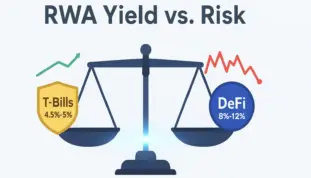
In contrast, DeFi RWA protocols often tokenize off-chain assets without clear legal wrappers. These tokens may represent fractional ownership, debt obligations, or yield claims—but without formal registration or investor protections. The lack of standardized disclosures and enforcement mechanisms introduces significant legal uncertainty.
European jurisdictions such as Germany and Switzerland have made progress in defining tokenized securities, but cross-border enforcement remains complex. In Canada and the UK, regulators are actively reviewing tokenized instruments, but no unified framework exists. This patchwork of rules creates friction for institutional investors and raises the risk of retroactive enforcement.
The Unavoidable Regulatory Question: Applying the Howey Test
For token issuers dealing with American investors, the most critical — and often determining — factor is whether the asset can be legally classified as a security by the U.S. Securities and Exchange Commission (SEC). This legal classification fundamentally hinges on the four prongs of the Howey Test. If a token fails this test, the issuer faces severe penalties, and investors risk losing their entire principal due to sudden regulatory action. Therefore, understanding whether your chosen RWA token is likely to be deemed a security is paramount for assessing true investment safety. For an in-depth analysis of the test’s criteria and its direct application to RWA tokens, you can refer to our dedicated guide on the legal status of RWA tokens.
Risk Factors Checklist
| Risk Type | Tokenized T-Bills | DeFi RWA |
|---|---|---|
| Regulatory | ✔️ | ✔️ |
| Smart Contract | ❌ | ✔️ |
| Liquidity | ✔️ | ✔️ |
| Counterparty | ❌ | ✔️ |
Liquidity Comparison: RWA vs. TradFi Securities
Liquidity is often the overlooked dimension in RWA investment analysis. While yield and safety dominate headlines, the ability to enter and exit positions efficiently can make or break a portfolio—especially during periods of market stress.
Tokenized T-Bills offer relatively high liquidity compared to their traditional counterparts. Platforms like Ondo and Backed allow 24/7 trading of tokenized instruments, bypassing the constraints of banking hours and settlement delays. Investors can move in and out of positions with minimal friction, although some platforms impose redemption windows or minimum holding periods.
DeFi RWA lending protocols vary widely in liquidity. While some pools offer instant withdrawal, others require lock-up periods or rely on borrower repayments to release funds. Slippage can be significant, especially in low-volume pools or during market volatility. Additionally, secondary markets for RWA tokens are still nascent, limiting exit options.
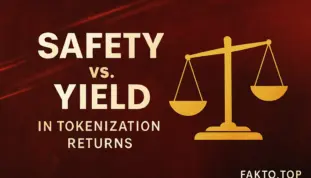
Tokenized real estate is typically the least liquid among RWA categories. Properties are inherently illiquid, and tokenized shares often trade on niche platforms with limited volume. Redemption may require off-chain coordination or approval from property managers, introducing delays and uncertainty.
Stablecoin lending platforms like Aave and Compound offer the highest liquidity. Users can deposit and withdraw funds instantly, with deep liquidity pools and minimal slippage. However, the trade-off is lower yield and exposure to smart contract risk.
Liquidity Comparison: RWA vs. TradFi Securities and the T+0 Advantage
Liquidity is often the overlooked dimension in RWA investment analysis. While yield and safety dominate headlines, the ability to enter and exit positions efficiently can make or break a portfolio—especially during periods of market stress. Crucially, RWA tokens introduce a transformative feature: T+0 Settlement.
The TradFi Constraint: T+2 Settlement
In traditional finance (TradFi), securities like stocks and bonds are bound by legacy clearing and settlement systems. The standard practice, even in modern markets, is T+2 settlement (Trade Date plus two business days) or, increasingly, T+1. This delay means investors do not receive their funds or assets instantly, creating counterparty risk during the settlement window and tying up capital for days. For large institutional investors managing millions in daily capital flows, this lag is a significant efficiency drain.
The RWA Advantage: Instant T+0 Settlement
Tokenized RWA assets, however, leverage the native capabilities of the blockchain. Since the token itself represents the ownership claim, the transfer of the token on-chain is the transfer of the asset claim. This results in near-instantaneous settlement (T+0). Investors who sell their tokenized U.S. Treasury Bills or tokenized bonds receive their corresponding stablecoins immediately, bypassing the long clearinghouse process. This real-time settlement capability is a massive advantage for investors who prioritize capital velocity and operational efficiency.
Tokenized T-Bills offer relatively high liquidity compared to their traditional counterparts. Platforms like Ondo and Backed allow 24/7 trading of tokenized instruments, bypassing the constraints of banking hours and settlement delays. Investors can move in and out of positions with minimal friction, although some platforms impose redemption windows or minimum holding periods.
DeFi RWA lending protocols vary widely in liquidity. While some pools offer instant withdrawal, others require lock-up periods or rely on borrower repayments to release funds. Slippage can be significant, especially in low-volume pools or during market volatility. Additionally, secondary markets for RWA tokens are still nascent, limiting exit options.
Tokenized real estate is typically the least liquid among RWA categories. Properties are inherently illiquid, and tokenized shares often trade on niche platforms with limited volume. Redemption may require off-chain coordination or approval from property managers, introducing delays and uncertainty.
Stablecoin lending platforms like Aave and Compound offer the highest liquidity. Users can deposit and withdraw funds instantly, with deep liquidity pools and minimal slippage. However, the trade-off is lower yield and exposure to smart contract risk.
Final Verdict: Safety, Yield, and Your RWA Investment Strategy
Choosing the right RWA investment requires balancing three core metrics: yield, safety, and liquidity. Tokenized Treasury Bills offer unmatched safety and solid yield, making them ideal for conservative investors. DeFi RWA lending delivers high returns but demands rigorous risk management and legal awareness. Tokenized real estate provides diversification but suffers from illiquidity and regulatory ambiguity.
Stablecoin APY platforms remain a flexible option for short-term positioning, offering instant access and composability within DeFi ecosystems. However, their yield is often insufficient for long-term capital growth.
Ultimately, a diversified RWA strategy—anchored by tokenized T-Bills and supplemented by selective DeFi exposure—can provide both stability and upside. Investors must assess their risk tolerance, jurisdictional exposure, and liquidity needs before allocating capital.
Disclaimer
The content on this page is for informational and educational purposes only and should not be considered financial, legal, or investment advice. The cryptocurrency market is volatile, and investing in Real-World Assets (RWA) carries inherent risks, including potential regulatory changes and smart contract failures. Always conduct your own research (DYOR) and consult with a qualified professional before making any investment decisions.

